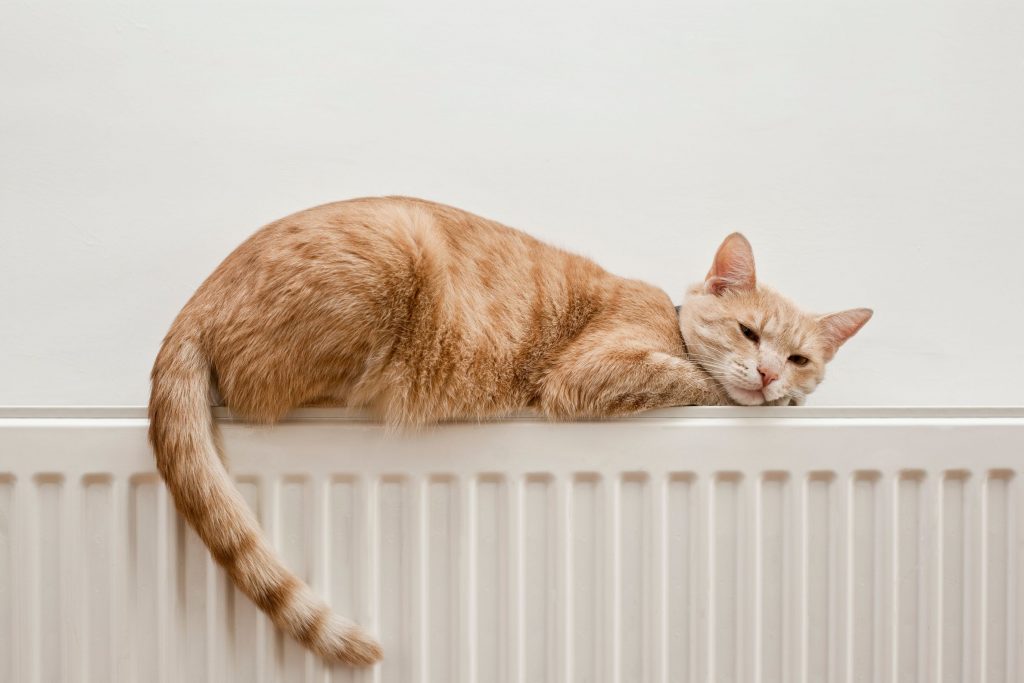
When It Comes to Feline Body Language, Look at the Tail

Dogs use their tails in a fairly straightforward way. They wag it uncontrollably when they’re happy, and that’s about it! Cats, on the other paw, come equipped with precise tail movements designed to communicate exactly what they’re feeling. The trouble is, not everyone is listening.
When owners pay close attention to feline body language, and specifically how the tail looks, they are more likely to give their fluffy buddy exactly what they need.
Key Positions
Cats rely on various types of vocalizations to get their points across. Meowing, howling or hissing are pretty effective at conveying certain messages. Other aspects of feline body language can involve their eyes, mouths and ears.
However, the tail is most instrumental at showing a cat’s mood or state of mind. If they are happy, mad, sensitive, or hurting, you’ll likely be able to figure it all by looking at the tail’s appearance.
Up, Down, All Around
Most people know that a friendly cat typically shows an upright tail, sometimes with a curve at the top (showing curiosity or inquisitiveness). They are likely feeling very confident, relaxed, and strong about the positive encounter they’re having and show their pleasure with a vertical tail. Enhance this special moment by scratching a bit at the base of the tail, or toss one of their favorite toys to play fetch.
The Walk By
Cats enjoy walking by their owners’ legs in order to rub up on them. They may use the corners of the mouths to mark their territory with their scent glands, but more likely they are using their whole body to say hello. Watch closely for a lingering tail. They’ll use it as a fifth appendage to “shake” hands with you.
Cats may also drape their tail over you while you’re sitting nearby in another example of the powerful human-animal bond. If you get close enough to their face you might just get a head bop!
Quite possibly one of the best elements of feline body language is the “twitchy tail”. Cats seem to vibrate their vertically-pointed tail when nearby their beloved person. This is the moment to offer your affection right back at Mr. Fluffy Pants!
Back Off
While sometimes subtle or confusing to some, feline body language is precise when it wants to be. When they feel frightened or threatened, cats may puff up their tail and the hair on the backs in order to look larger. This is a clear signal to perceived threats, and they’re issuing a warning to back off. You may also see the tail flicking back and forth, along with growling, hissing, spitting, and staring.
A Tucked Tail
When cats tuck the tail between their back legs they are showing insecurity, fear, anxiety, stress or even submission to a dominant individual. They may be trying to cover up their belly, or appear smaller.
If the tail is simply lowered to the ground, but not tucked, they are ready to investigate the environment. The tail is positioned in a sort of steady, yet timid, fashion, indicating that they’re making up their mind.
Feline Body Language
Getting to know your cat and appreciating their unique traits is arguably one of the best aspects of cat ownership. They feel valued and respected when feline body language is received and understood. The result is that their trust in you deepens and expands!
We love cats just as much as you do. If you have any questions about your cat’s health and wellness, we’re always here for you at Arlington Animal Hospital.
Contact Us!
2301 Columbia Pike #G-1, Arlington, VA 22204
Phone: (703) 920-5300
Fax: (703) 685-8860
Email: info@myarlingtonvet.com
Office Hours
-
Monday
8 a.m. – 8 p.m.
-
Tuesday
8 a.m. – 8 p.m.
-
Wednesday
8 a.m. – 6 p.m.
-
Thursday
8 a.m. – 6 p.m.
-
Friday
8 a.m. – 6 p.m.
-
Saturday
8 a.m. – 2 p.m.
-
Sunday
CLOSED
- Doctors’ hours are by appointment only.



